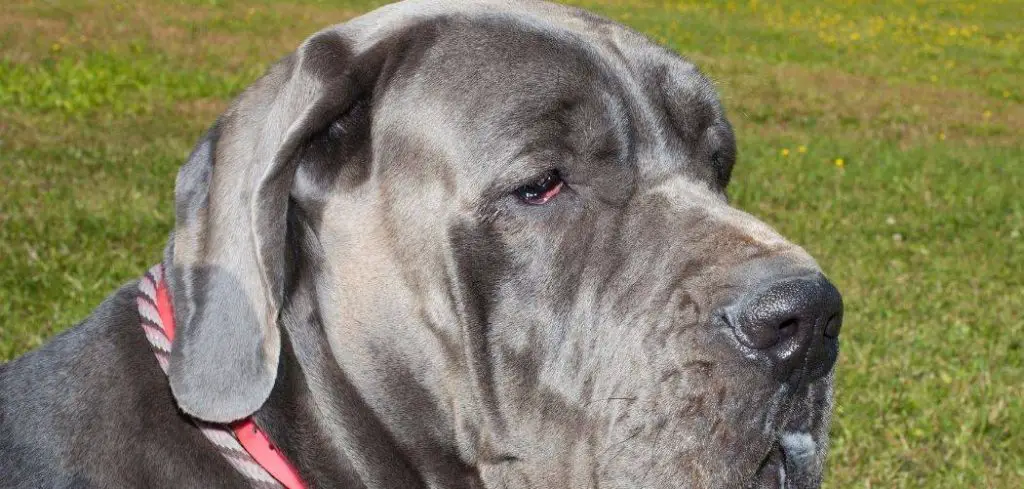When your dog starts groaning and refusing food, it can be alarming. Groaning might seem harmless at first, but when combined with appetite loss, it could indicate an underlying issue that needs attention.
We outline the common causes of dog groaning and not eating, what you can do at home, and when to seek veterinary help.
Dog Groaning and Not Eating — Why It Happens
Groaning paired with loss of appetite is often a red flag for pain, discomfort, or a systemic illness. It could be related to digestive upset, joint or spinal pain, internal organ problems, or stress.
Sometimes the groaning is due to your dog trying to communicate distress they can’t express otherwise. Appetite loss only intensifies concern, signaling a deeper health issue.

Common Causes of Dog Groaning and Not Eating
Abdominal Pain
Digestive problems like gas, bloating, or inflammation in the stomach or intestines can lead to abdominal pain.
Dogs may groan when lying down or shifting positions due to the discomfort.
You might also notice pacing, a tucked-up abdomen, or whining. The pain can suppress their desire to eat, especially if eating seems to worsen the problem.
Conditions like gastritis or pancreatitis are common culprits.
Arthritis or Joint Pain
Older dogs or those with joint disease may groan as they struggle to get comfortable. When lying down, they might vocalize from stiffness or aching joints.
Pain can also reduce appetite, especially if it’s difficult for them to reach their food or move around.
Hip dysplasia, arthritis, or spinal disc disease are common conditions that link groaning with behavioral changes like not eating.
Pancreatitis
Pancreatitis causes inflammation of the pancreas, leading to severe abdominal pain, vomiting, and groaning. Appetite loss is a hallmark symptom.
Your dog may groan when touched on the belly or try to isolate themselves.
Other signs include diarrhea, lethargy, and a hunched posture.
This condition is more common in dogs fed fatty foods or with prior digestive sensitivity.
Bloating or GDV (Gastric Dilatation-Volvulus)
Large, deep-chested breeds are especially prone to bloat, where the stomach fills with gas and can twist (GDV).
Groaning, restlessness, a distended belly, and sudden refusal to eat are early signs.
GDV is a medical emergency and can be fatal if not treated quickly.
If your dog groans continuously, pants heavily, and has a firm abdomen, seek immediate veterinary attention.
Back or Neck Pain
Dogs with intervertebral disc disease or other spinal issues may groan due to pain when moving, lying down, or trying to rise.
This kind of discomfort often leads to changes in eating habits, especially if pain flares up during certain positions.
Look for signs like reluctance to jump, arching the back, or neck stiffness.
Pain medications prescribed by your vet can help relieve this.
Read more: Dog Getting Sick and Not Eating (What’s really going on?)
Emotional Distress or Anxiety
Dogs groan when they’re stressed or emotionally overwhelmed. Separation anxiety, grief, or household changes can trigger vocalizations and a refusal to eat.
Some dogs will lie quietly and groan as a coping mechanism, while others may pace or hide.
Appetite loss in these situations is often behavioral but still concerning, especially if it lasts longer than a day.
What to Do If Your Dog Is Groaning and Not Eating
Start by observing when the groaning occurs. Does it happen while lying down, when being touched, or around mealtimes?
Note any additional symptoms like vomiting, diarrhea, limping, or fever.
You can offer bland food like boiled chicken and rice to see if your dog will eat something gentle.
If your dog shows signs of pain (such as a hunched back, difficulty walking, or flinching), try to keep them calm and restrict movement until a vet visit.
Minimize stressors in the home, provide a quiet resting space, and monitor their water intake.
If your dog resumes eating within 12–24 hours and the groaning subsides, it may have been a mild upset.
However, if symptoms persist, worsen, or return frequently, veterinary help is essential.
When to Call or Visit Your Vet
Groaning in dogs is not always an emergency, but it can be a warning sign. Contact your vet promptly if your dog:
Has groaned for more than a day with no improvement
Refuses all food or water
Shows signs of abdominal bloating or pain
Has diarrhea, vomiting, or a hunched posture
Seems lethargic or is isolating themselves
Cries out, flinches, or groans during movement or touch
Early diagnosis and treatment often lead to better outcomes, especially for digestive or musculoskeletal issues.
Read more: Dog Gagging and Not Eating (What it means)
Key Takeaway
If your dog is groaning and not eating, don’t ignore it. It’s often their way of telling you something is wrong—whether it’s pain, illness, or emotional stress.
Watch for patterns, offer comfort and bland food, but don’t delay in contacting your vet if signs continue.
Prompt care can ease your dog’s discomfort and uncover hidden issues that may be affecting their health.
